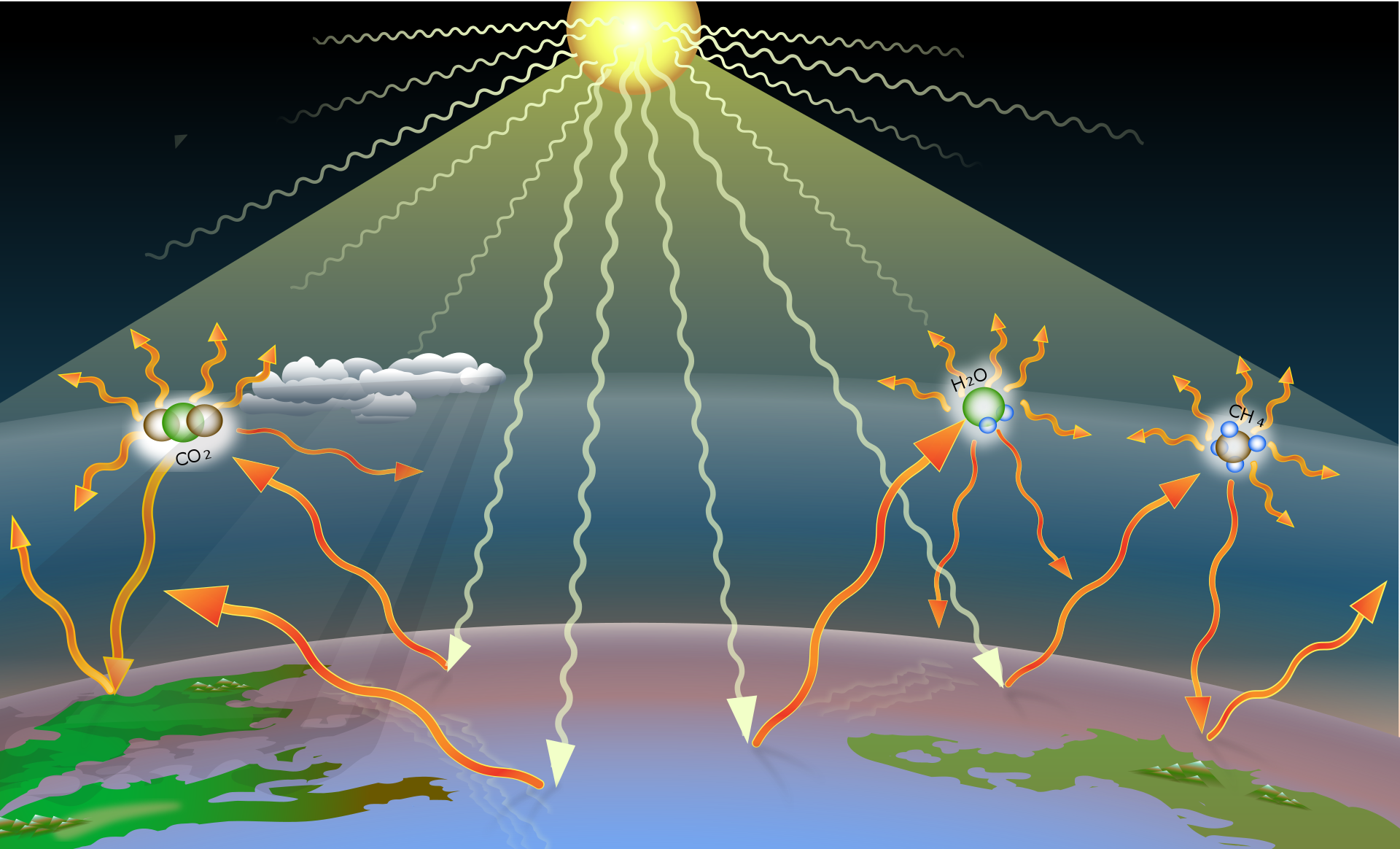What is The Greenhouse Effect?
The greenhouse effect is a process that occurs when gases in Earth’s atmosphere trap the Sun’s heat. This process makes Earth much warmer than it would be without an atmosphere. The greenhouse effect is one of the things that makes Earth a comfortable place to live.
How does it work?
Step 1: Solar radiation reaches the Earth’s atmosphere – some of this is reflected back into space.
Step 2: The rest of the sun’s energy is absorbed by the land and the oceans, heating the Earth.
Step 3: Heat radiates from Earth towards space.
Step 4: Some of this heat is trapped by greenhouse gases in the atmosphere, keeping the Earth warm enough to sustain life.
Step 5: Human activities such as burning fossil fuels, agriculture and land clearing are increasing the amount of greenhouse gases released into the atmosphere.
Step 6: This is trapping extra heat, and causing the Earth’s temperature to rise.
Greenhouse gases
By their percentage contribution to the greenhouse effect on Earth the four major gases are:
- water vapor, 36–70%
- carbon dioxide, 9–26%
- methane, 4–9%
- ozone, 3–7%
Atmospheric gases only absorb some wavelengths of energy but are transparent to others. The absorption patterns of water vapor (blue peaks) and carbon dioxide (pink peaks) overlap in some wavelengths. Carbon dioxide is not as strong a greenhouse gas as water vapor, but it absorbs energy in longer wavelengths (12–15 micrometers) that water vapor does not, partially closing the “window” through which heat radiated by the surface would normally escape to space. (Illustration NASA, Robert Rohde).
It is not possible to assign a specific percentage to each gas because the absorption and emission bands of the gases overlap (hence the ranges given above). Clouds also absorb and emit infrared radiation and thus affect the radiative properties of the atmosphere.
Also read about
- 5 Best Telescopes for Viewing Planets in 2020 [Saturn, Mars, Jupiter, etc.]
- 5 Best Dobsonian Telescopes in 2020 [From 8 to 12-inch Options]
- 5 Best Refractor Telescopes in 2020 [for Planets & Astrophotography]
Greenhouse effect on other planets
The ‘greenhouse effect’ on Venus is particularly large for several reasons:
- It is nearer to the Sun than Earth by about 30%.
- It has a much weaker magnetic field meaning less protection from solar radiation and heating effects.
- Its very dense atmosphere consists mainly of carbon dioxide.
“Venus experienced a runaway greenhouse in the past, and we expect that Earth will in about 2 billion years as solar luminosity increases”.
In complete contrast the mean temparature on Mars is very cold at -63 deg C [-82 deg F]. This is despite having over 95% atmospheric CO2, almost the same as Venus’s atmosphere, but at a much lower pressure than the atmospheres on Earth and Venus. Mars is further from the Sun than Earth but still receives about 44% of the Sun’s heat [approx 500 W/m2] when compared to Earth. Also any atmospheric or surface heating from solar flares and cosmic radiation affects Mars as it has no magnetic field.
Titan has an anti-greenhouse effect, in that its atmosphere absorbs solar radiation but is relatively transparent to outgoing infrared radiation.
Pluto is also colder than would be expected because it is cooled by evaporation of nitrogen.


![12 Best Budget Telescopes in 2024 [Maximum Value for Money]](https://www.planetguide.net/wp-content/uploads/2019/12/refreactor-telescope-768x461.jpg)


![12 Best Telescopes for Kids in 2024 [Toddlers to Teens]](https://www.planetguide.net/wp-content/uploads/2019/12/Depositphotos_2254021_l-2015-768x512.jpg)
